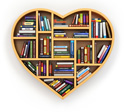도서 소개
상품 상세설명
Massage is a basic skill within physiotherapy, and one which requires a high standard of practical application. It is a skill which is increasingly being taken up by other health care and complementary therapy professionals. This new, third edition of Massage for Therapists is a timely and thorough update which continues the tradition of Margaret Hollis' hands-on approach. The book is designed to be a step-by-step guide to the theory and practical application of classical massage. Once mastered, these techniques may form the basis for a variety of modifications suitable for specific conditions.
Massage for Therapists is split into three sections: an introduction to massage and preparation for giving a massage; the massage manipulations by area of the body; and some key modifications to the standard manipulations. In order to further enhance the practitioner's skill and to give the reader a grounding in some of the popular specialities, updated chapters on aromatherapy and massage in sport sit alongside new chapters which introduce myofascial release and shiatsu.
Massage for Therapists will be of interest to student and qualified physiotherapists and sports therapists, as well as occupational therapists, chiropractors, osteopaths, nurses, complementary therapists and beauty therapists.
• Practical, applied text
• Thoroughly updated by subject experts
• Illustrated throughout with photographs which support the explanations of the therapeutic application.
배송정보

주문하신 책과 다른 책이 잘못 배송되었거나 배송된 도서가 파본인 경우, 도서를 아래의 두가지 방법 중 하나를 선택하여 반송해 주시면 됩니다.
택배 또는 우편등기를 통한 반송 오발송이나 파본된 책에 대한 내용을 고객센터(033-745-8879)나 반품 및 교환 문의를 통해 알려 주시고,
오발송/파본 도서를 보내주시면 확인 후 택배 또는 우편으로 원래 주문하신 정상적인 책을 보내드립니다.
* 반송할 주소 : 강원도 원주시 판부면 매봉길 30-14 1층 의방서원
반송하실 때, 파본 도서의 경우 인쇄되지 않은 페이지나, 중복된 페이지, 찢어진 부분 등 구체적인 파본 부분을 포스트잇이나 메모지에 적어 표시해 주시면 감사하겠습니다.
또한 주문번호를 같이 기재해 주시면 주문자 확인 등에 소요되는 시간을 단축할 수 있어 환불이나 교환 등의 사후처리를 보다 빨리 할 수 있습니다.
물론, 반송비용과 재발송 비용은 본사에서 부담합니다.
책을 보내실 때 주문번호와 함께 환불해 드릴 계좌번호를 써서 보내주십시오.

의방서원 회원 약관 및 소비자 보호원 및 공정거래위원회 규정 표준 약관에 근거해 환불이 가능합니다.
하지만 다른 상품과 달리 도서는 상품 외형의 가치보다는 그 속에 담겨 있는 내용에 가치가 있는 것이기 때문에 반품가능 기간이 정해져 있습니다.
반품을 원하시는 도서는 받으신지 5일 이내에 등기우편을 통해 저희 회사로 보내주십시오.
단, 오발송이나 파본된 도서가 아닌 경우에는 배송 비용은 회원님께서 부담하셔야 합니다. 환불시 배송비용을 제외하고 난 후 송금해 드립니다.
이렇게 보내주신 책은 저희 반송 담당자의 확인을 거친 후 환불 처리되게 됩니다. 구체적인 반품 과정은 아래와 같습니다.
1. 전화 033-745-8879 연락 후
반품/교환 문의를 통해 반품하실 도서명을 저희에게 알려 주신 후 등기우편으로 보내주시면 됩니다.
2. 반품하실 주소는 위의 반송 주소와 동일합니다.
3. 보내실 때 반품 도서의 주문번호와 환불해 드릴 계좌번호를 메모지에 적어 함께 넣어주시기 바랍니다.
이러한 메모가 있는 경우에 보다 신속하게 반품 처리가 될 수 있습니다.
 즐겨찾기
즐겨찾기 고객센터
고객센터










